Charger Olight Omni-dok
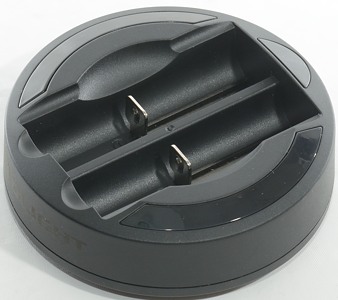
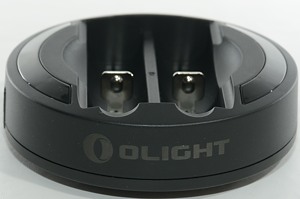
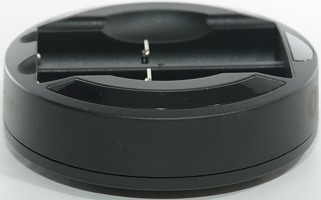
Olight has also decided to sell a charger, this is a multi-chemistry charger with two slots and everything is automatic.
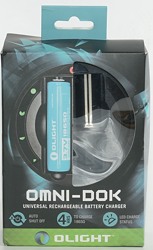

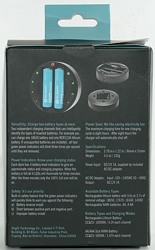

The charger arrives in a cardboard box with a window, the box has specifications on the outside.
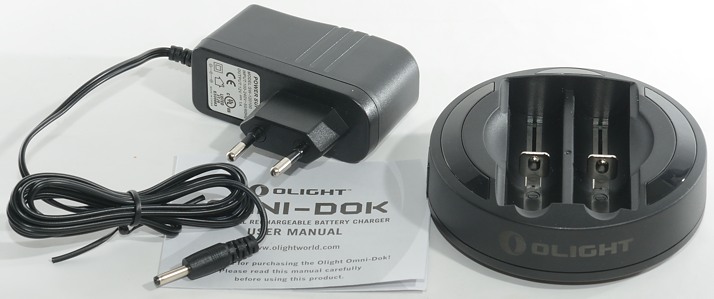
The contents of the box is the charger, a power supply and a user manual.
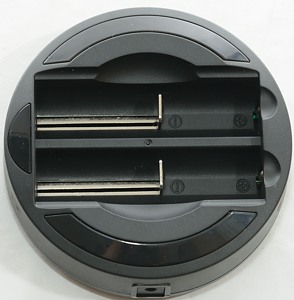
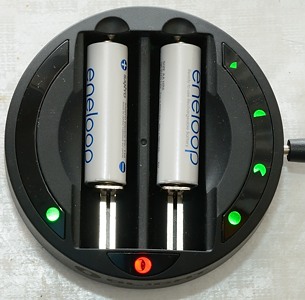
The charger has 9 led indicators, hidden beneath the black top, there is four green charger status leds on each side and a red power led at the back of the charger.
The charge status is a 1/4, 1/2, 3/4 and a full circle. When charging one of them will flash to indicate how much the batteries are charged. When finished all of them will light up for a short time, then the full circle will stay on and the other will turn off.
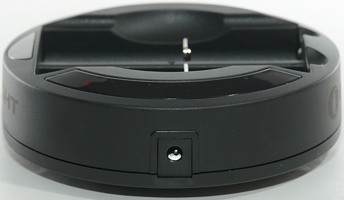
On one "side" of the charger the power must be connected. This connector is a using a uncommon size.
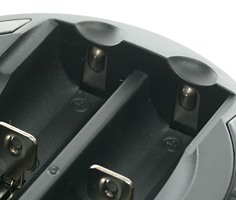

The battery holder is the classic slider construction and works smootly. It can handle batteries from 31 mm to 71 mm.


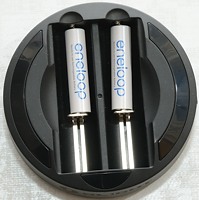
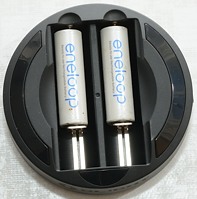
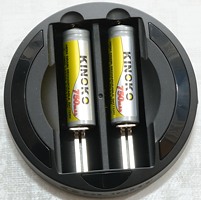
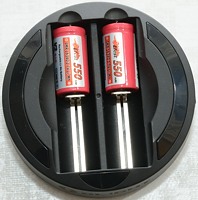
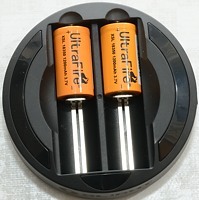
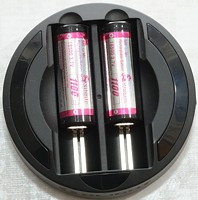
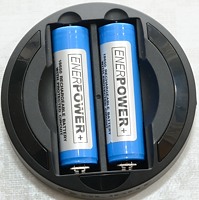
The charger can handle 70 mm long batteries, inclusive flat top cells.
The charger promises to handle many battery sizes, but due to the charger current, it is not a good idea to charge small ICR batteries, but small IMR batteries is usual fine.
Measurements
- The charger will say error (All leds flashing) if the battery voltage is below 0.4V
- The charger will start NiMH charging with 350mA and later increase to 500mA.
- Above 2.0V the charger will assume LiIon battery.
- Between 2.0V and 3.0 volt the charger will charge with 270mA
- Above 3.0V the charger will use regular LiIon charge current.
- If the voltage drops to 4.0V the charger will restart.
- Power cycling or battery reinsertion will restart charging.
- The power supply uses a small barrel connector: 3.4/1.3mm
- When LiIon battery is full the charger charges with about 50uA.
- Without power the charger will discharge a LiIon battery with about 30uA.
%20%231.png)
The charge curve is mostly a CC/CV, but I wonder why most of the charging is done at 900mA and then uses 1150mA for the 30 minutes in CC phase. The termination at 100mA is fine.
%20%232.png)
On channel #2 the charger is constant 1000mA and has a lower termination current.
%20%231.png)
%20%231.png)
Again channel #1 uses two different charge currents.
%20%231.png)
The 14500 is charged with 1100mA, this will reduce the lifetime of the battery.
%20%231.png)
The charger has no problem with the 18350 cell.
%20%231.png)
Even my old IMR cell is handled fine, but the current is to high for a 16340 cell and the high termination current prevents the cell from being filled completely.
.png)
With two batteries in the charger, the current is slightly below 1A during the full charge time.
.png)
Also when using the lab power supply. The charger uses about 1A from the power supply.
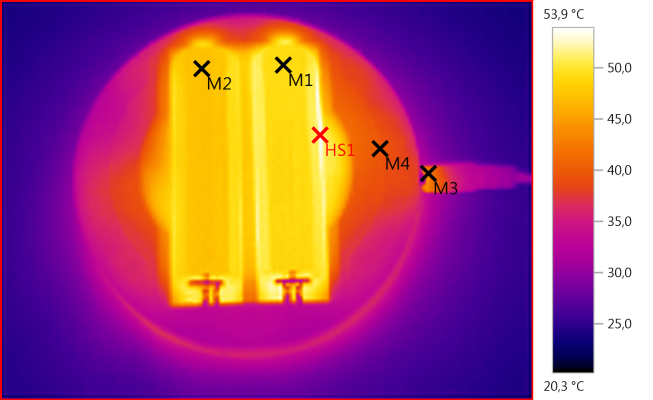
M1: 49,2°C, M2: 47,3°C, M3: 43,1°C, M4: 39,8°C, HS1: 53,9°C
This charger is a bit hot when charging LiIon
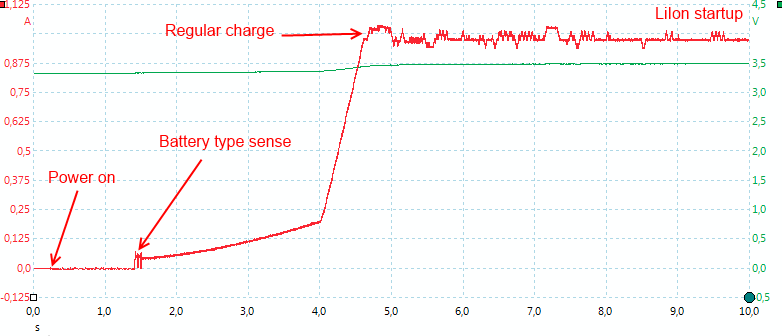
The charger needs about 4 seconds to start.
NiMH batteries
%20%231.png)
With NiMH the charger starts at 300mA and after some time switches to full current, i.e. 500mA.
The charger is measuring voltage and stops when the battery reaches a specific voltage, this is a very common algorithm to use, but it is not guaranteed to fully charge the battery. As can be seen on the temperature trace, the battery does not warm up, signally it is full.
Often chargers add a top up charge after this termination, to ensure that the battery is full, this is not the case here.
%20%232.png)
Channel #2 works the same way.
%20%231%20only%20thermo.png)
Here I removed the current sense resistor (0.01ohm), to see if it changed the behavior, but no, there is no temperature raise at the end of charge.
%20%231%20full.png)
The charger has no problem detecting a full battery.
%20%231.png)
%20%231.png)
Both a AAA and a Eneloop pro is charged without the final temperature raise.
.png)
The two channels does not affect each other when charging two eneloops.
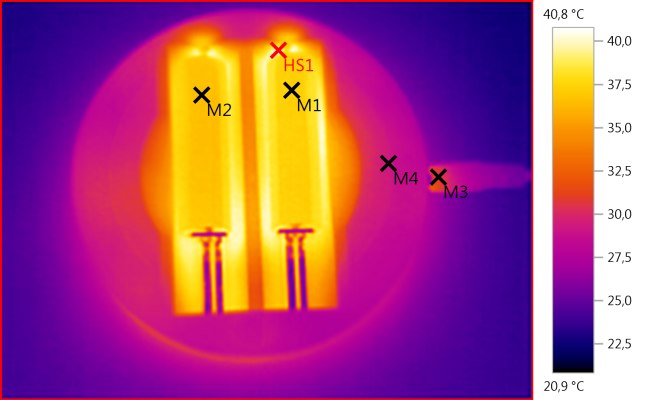
M1: 37,3°C, M2: 36,6°C, M3: 30,9°C, M4: 29,4°C, HS1: 40,8°C
The lower current for NiMH does also keep the temperature down.

The charger is sligtly faster when starting with NiMH batteries.
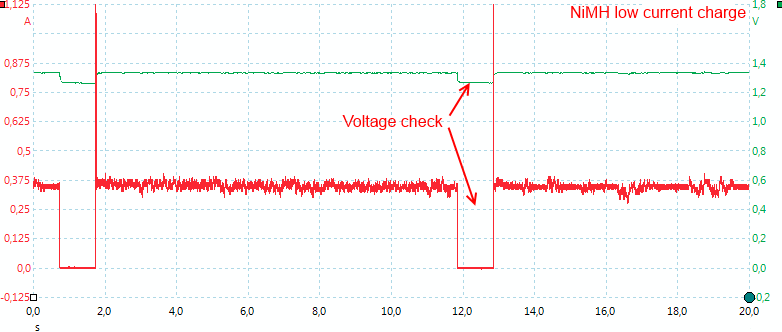
The first part of the NiMH charge the charger will use reduced current.
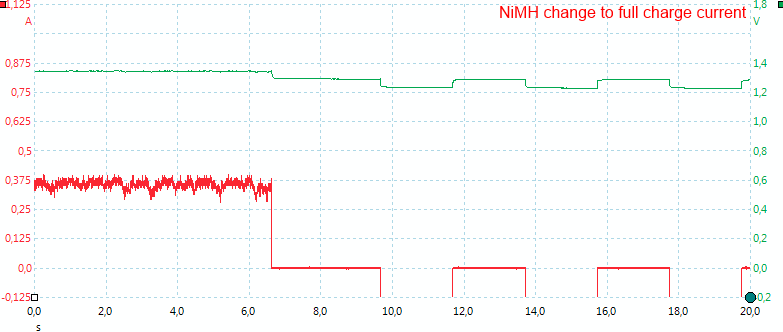
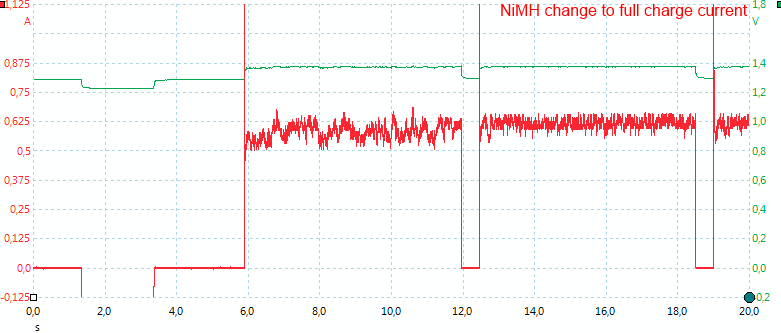
Then after some time it does some special test where it dischargers the battery with a few pulses, before it increases the current to full charge current.

With full charge current it is checking the voltage more often.
Mixing LiIon and NiMH batteries
.png)
.png)
No surprises when charger one LiIon and one NiMH in the charger.
Testing the mains transformer with 2500 volt and 5000 volt between mains and low volt side, did not show any safety problems.
Conclusion
This charger is very simple to use, just put a battery into it and it will be charged, it works for both LiIon and NiMH, but this simplicity hides one caveat: small batteries. Charging small LiIon batteries with 1A will shorten their lifetime. The batteries are also fairly warm when charging.
I do wonder about some of the antics of the charger, but it works fine for LiIon, with NiMH it might not fill them completely.
This makes it a good charger for LiIon and an acceptable charger for NiMH.
Notes
Here is an explanation on how I did the above charge curves: How do I test a charger






















%20%231.png)
%20%232.png)
%20%231.png)
%20%231.png)
%20%231.png)
%20%231.png)
%20%231.png)
.png)
.png)


%20%231.png)
%20%232.png)
%20%231%20only%20thermo.png)
%20%231%20full.png)
%20%231.png)
%20%231.png)
.png)






.png)
.png)